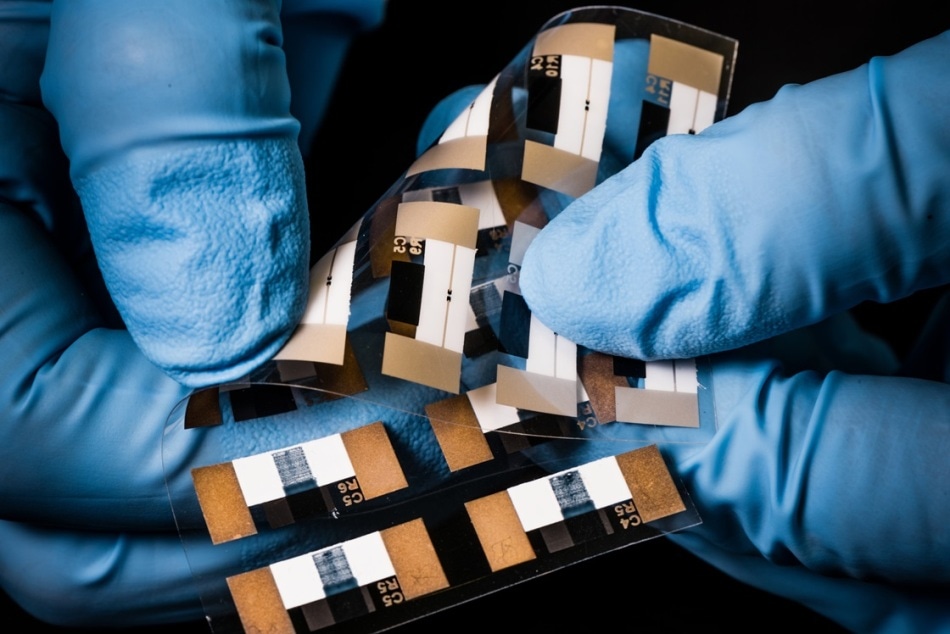Jul 6 2017
Researchers from the Laboratory of Organic Electronics (LOE) have performed a trend-setting research which involves developing printed electronic transistor circuits and displays in which the color of individual pixels can be altered. The outcomes of the study, which also has various applications, have been reported in Science Advances, a prestigious scientific journal.
 Ferroelectrochemistry. CREDIT: Thor Balkhed.
Ferroelectrochemistry. CREDIT: Thor Balkhed.
PEDOT:PSS, a conducting polymer with the ability to conduct electrons as well as ions, is a material that organic electronic Researchers really like to work with. Transistors and displays fabricated with this polymer have various benefits: the material is non-toxic, and the components can be produced in a simple and inexpensive manner. Yet, it is highly challenging to produce devices with the ability to quickly shift at a particular voltage, the so-called “threshold voltage,” indicating that to date it has been challenging to accurately regulate the current state of transistors or the color state of displays.
“The lack of any threshold in the redox-switching characteristics of PEDOT:PSS hampers bistability and rectification, characteristics that would allow for passive matrix addressing in display or memory functionality” stated Simone Fabiano, Senior Lecturer at the LOE, who is one of the Principal Authors of the article published in Science Advances. Negar Sani from the research institute RISE Acreo is the other Principal Author.
Wild ideas
Nearly five years back, a crude concept surfaced at the LOE: Can this challenge be overcome by integrating electrochemistry with ferroelectricity? Ferroelectric materials comprise dipoles, where one end of a dipole is positively charged and on the other end is negative charged. Upon exposure to an electric field more than a particular threshold value, the “ferroelectric” dipoles start to rotate.
Professor Magnus Berggren, head of LOE, could not just let this idea rest. In December 2012, as soon as he was granted a research grant from the Knut and Alice Wallenberg Foundation that could be used without any restrictions, this was one among the high-risk research works he chose to invest in.
We called the research then breakneck research, and here is a result. Our demonstration proves that truly leading research typically take a long time and require considerable patience. Simone Fabiano has done tremendous work here, and refused to give up when others have doubted.
Professor Magnus Berggren, Head of LOE
Ferroelectric material
It took many years of persistent research for Simone Fabiano and his team from the LOE to try and apply a thin ferroelectric material layer on an electrode in organic electrochemical devices and circuits.
“The thickness of the layer determines the voltage at which the circuit switches or the display changes color. Transistors are no longer required in the displays: we can control them pixel-by-pixel simply through a thin ferroelectric layer on the electrode,” stated Simone Fabiano.
In the Science Advances article, the LOE research team has demonstrated that “ferroelectrochemistry,” that is, the integration of ferroelectricity and electrochemistry, can be applied for producing displays used in printed electronics as well as for organic transistors. Yet, the Researchers predict the application of this technology in various fields.
Ferroelectrochemical components can easily be integrated into memory matrices and into bioelectronic applications, just to give a couple of examples.
Simone Fabiano, Senior Lecturer at the LOE
Ferroelectrochemistry
At present, the technology is safeguarded by patents.
The field of ferroelectrochemistry doesn’t actually exist, but we have achieved success using this combination.
Professor Magnus Berggren, Head of LOE
The study was subsequently also funded by the Swedish Foundation for Strategic Research, SSF, and Vinnova.